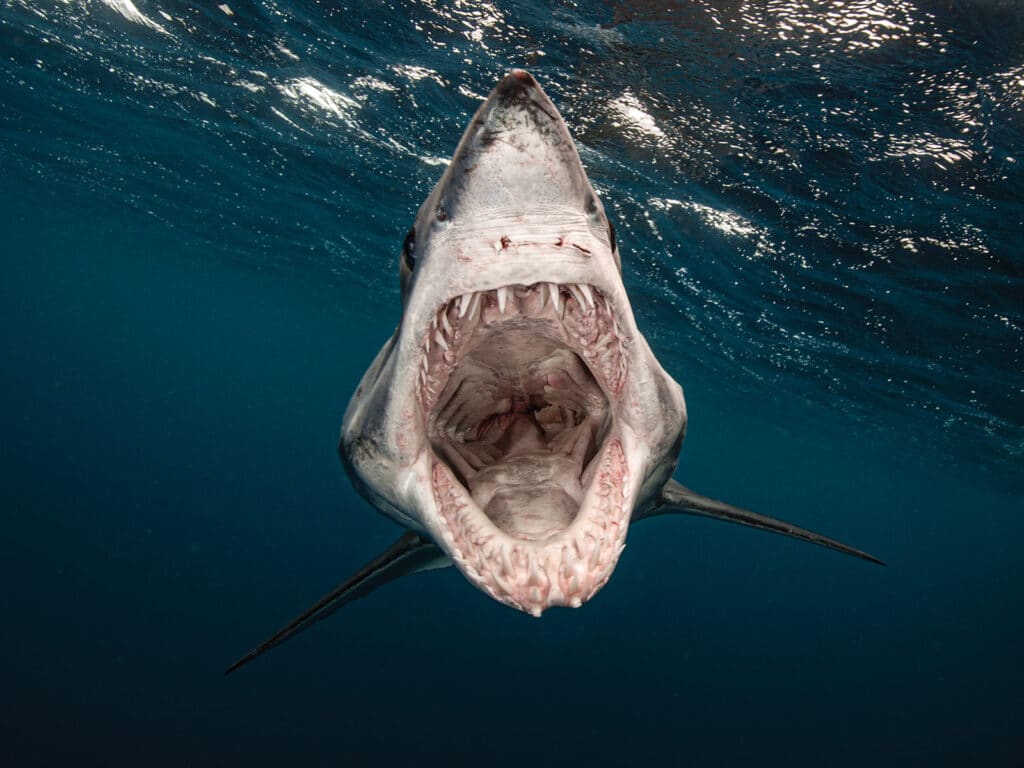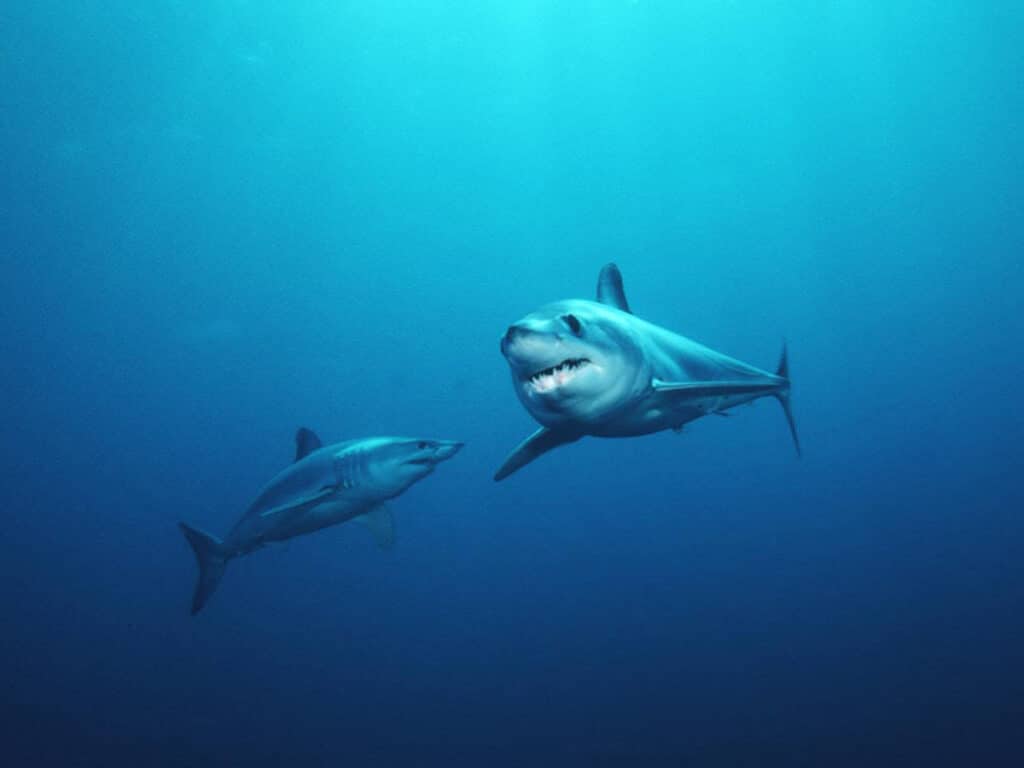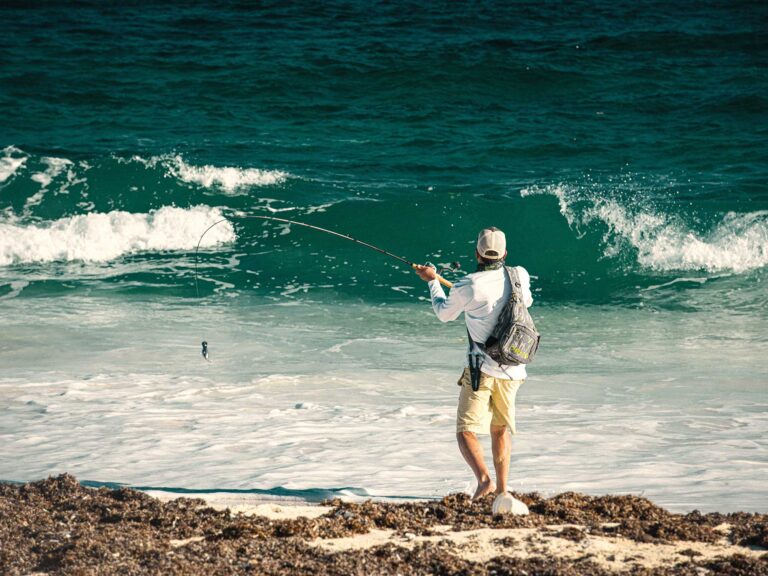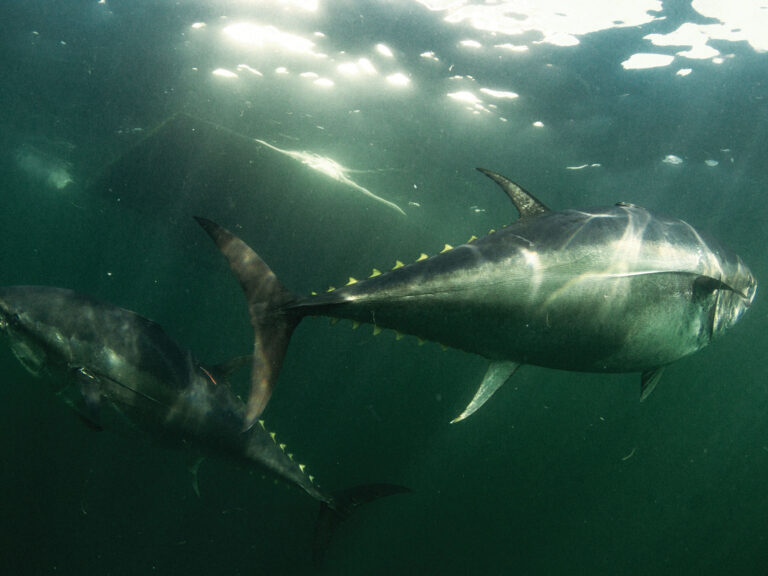
“Are mako sharks dangerous?” A better question might be: “Are mako sharks capable of harming humans?” To that, the answer would be an unequivocal “yes.” One look at a mako’s mouth would confirm that.
Follow-up: Do makos often harm humans? Definitely not. Mako attacks on swimmers are almost unheard of, and not surprisingly: Isurus oxyrinchus is a predator of blue water, the open ocean. It rarely frequents shallow beaches. Divers, particularly spear-fishers, on the other hand, can be at somewhat greater risk.
Still, the authoritative Florida Museum’s International Shark Attack File lists only 10 unprovoked attacks on humans by makos worldwide through 2022. Of these only three proved fatal. By comparison, the chances of getting killed by a lightning strike are far, far greater: NatGeo says about 2,000 people are killed annually worldwide by lightning.
Mako Sharks Can Jump Into Boats

For anglers, the bigger danger has to do with the mako’s astounding ability and inclination to leap high out of the water, and do so repeatedly. Given the fish’s innate speed at burst (at least 50 mph), it can cover amazing distances between jumps, making it often impossible to predict where and when it will next explode from the water. When an animal weighing 500 pounds or more leaps 20 feet or higher, no boat wants to be under it.
But of course, that has happened, particularly after a mako has been hooked. A number of such incidents were recorded in 2022, most recently in November when a mako leapt right onto the closed bow of a New Zealand fishing charter. No one was injured, though had the fish instead landed amidst people in the cockpit, the story could well have been different. Video shows the shark eventually thrashing its way back over the side and freedom. On July 6, a 10-footer did in fact jump into the cockpit of a boat off Long Island, New York. Fortunately the two anglers were nimble enough to avoid serious injury. In August, off Monhegan, Maine, a cell-phone video clearly shows a hooked mako leap well astern of a charter boat. It comes down, goes under and seemingly seconds later leaps high, immediately off the boat’s transom — and comes down to crash right into the cockpit. Remarkably, again, all aboard scrambled out of the way quickly. When the fish settled sufficiently, the captain managed to tag it and release it through the transom door.
In a well-publicized incident off Long Island, New York, in July, 2017, a sky-high mako landed on the bow of a boat to become wedged in between deck and bow rail, the phone video showing its viciously snapping head swinging back and forth over the side, jaws bloody from biting the railing repeatedly.
Mako Sharks Can Bite Boats
Then there’s the danger makos pose to boats. Yes, they have been known to attack boats, though rarely and — unless the boat’s a kayak — to relatively inconsequential if spectacular effect. One rather small mako left an impression not so much on the boat it went after as on the group of scientists aboard. They had just tagged and released the mako, when rather than swimming off, it turned around and came straight back to bite the boat, not just once but over and over. This fish was pissed: While sharks don’t have facial expressions, the underwater video clearly shows one really angry mako.
More often, makos go after lower units and props, sometimes getting so fixated on the metal that they’ll ignore fresh chunks of meat. Why would a mako repeatedly chomp down on something so unsatisfying as a hard metal prop, as this big shark off Australia? The answer lies in something called the Ampullae of Lorenzini. While that may sound like a medieval mystery, it’s the name for pores dotting the tip of the snout of many shark species, such as makos and whites, that are filled with a jelly-like substance. These can sense the most minute electrical impulses from muscle contractions of potential prey. They can also sense the electrical pulses produced by at least some boat motors.
Such encounters of the lower-unit kind with drifting boats are not uncommon. Typically, the shark eventually gives up, presumably with a slightly sore mouth. In some cases, mako teeth have punched into metal casings. That’s perhaps not so surprising considering the mako has an exceptionally powerful bite — recorded to approximately 3,000 PSI of force. No wonder makos can and do bite off entire tails of swordfish to disable them.









